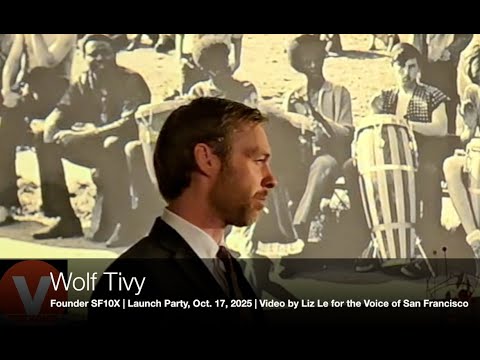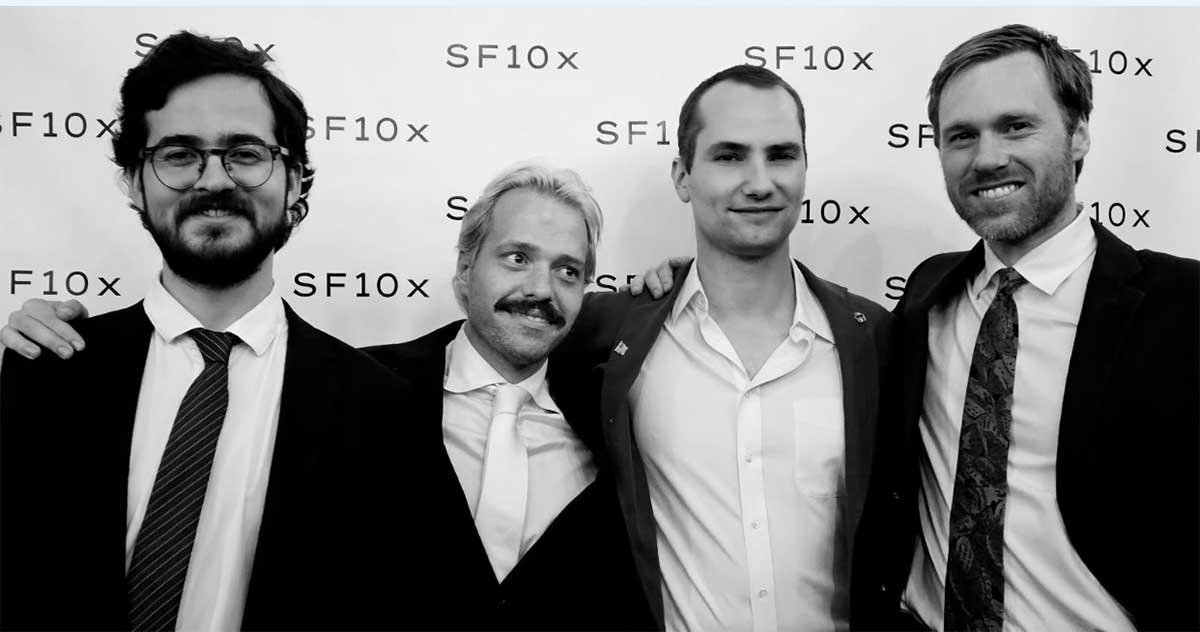A quietly rising coalition of civic-minded innovators is reimagining San Francisco, not through political grandstanding, but through tangible, tenfold impact. From neighborhood beautification to streamlining municipal inefficiencies, SF10X is a movement of thoughtful doers committed to elevating the city’s soul. Founded by Wolf Tivy, also the visionary behind Palladium magazine, the initiative soon drew in Pablo Peniche, Massey Branscomb, and DC Posch — all successful tech founders and entrepreneurs. Although this quartet hails from outside of San Francisco, their roots span Mexico City; Texas; Vancouver, British Columbia; and Southern California. That diaspora energy evokes the very ethos that built this city: hunger, grit, talent, and vision.
The spark began with Tivy’s dinner salons and grassroots trash cleanups. These were modest gestures that attracted a constellation of like-minded talent eager to roll up their sleeves. Branscomb’s own civic awakening came atop Bernal Heights, where he tried to install a swing to invite joy into public space. What followed was a Kafkaesque dance with city bureaucracy: Park and Recreation repeatedly removed the swing from the tree, regardless of its safety or sturdiness, revealing the absurd friction between playful creativity and government regulation.
Forget the tired caricature of the “tech bro.” At SF10X’s launch party, hosts and attendees were among the most sharply dressed, socially astute, and gracious event stewards seen in recent memory. The invitation itself set the tone: “Elegant dress enforced.”
“We want to be thoughtful in our approach,” Branscomb explained, while serving bespoke rum cocktails alongside sodas and Madame Clicquot. Tivy’s’s wife, Alisan, curated a utensil-free spread of charcuterie, fresh fruit, cookies, and handmade fudge cubes, which were anchored by perfectly seared slices of hanger steak. The guest list featured over 50 entrepreneurs, founders, creators, and investors, many of whom had recently chosen San Francisco as their new home.
Yet amid the polished crowd, it was the children who stole the scene. They were free-roaming, exuberant, and utterly immersed in games of hide-and-seek and scaling a lone library ladder with delight. They darted between conversations about hacking and robot fight clubs. Their presence served as a deliberate reminder that family and play are not peripheral to civic innovation, but central to its future. In the art of branding, SF10X left few details untouched. Their gatherings reflect not just ambition, but a reverence for community, aesthetics, family, fun, and the quiet power of doing.
These principles, bold yet grounded, form the scaffolding of SF10X’s ethos: A vision of San Francisco not just restored, but radically reimagined. Their manifesto calls out the city’s chronic underdevelopment in housing and transit, demands streets so clean that children could walk barefoot, and envisions a government that is lean, meritocratic, and magnificent. They believe families should flock to San Francisco for its schools — not flee from them. And at the heart of it all, they see the city as a crucible for an American industrial renaissance.
SF10X gatherings reflect not just ambition, but a reverence for community, aesthetics, family, fun, and the quiet power of doing.
In his speech, Tivy didn’t mince words: “We homeschool four of our kids … most of our friends with children have left the city. Why? Because there are no sane and normal educational options in this city.… If we want a future with more children in it, we are going to have to refocus the city on an order of magnitude of educational excellence.” It was a call not just for reform, but for reinvention. When it comes to urban development, Tivy proposed a Haussmann-style vision, echoing the grand boulevards of Paris, for San Francisco’s west side. His forward approach is also a nod to the city’s existing European footprints, offering a more dignified alternative to the patchwork of Richmond Specials and incongruous Vegas-style high-rises.
In the video below, Tivy lays out the core vision for SF10X. “It’s not our job to win elections or write detailed legislation … our job is to organize the energetic players in this city around a visionary new consensus for what it means to have a great city…. San Francisco is the city of the future…. The eyes of the world are upon us. If we succeed, others will follow our path. If we fail, our whole society might fail. Therefore if we want … a great future … we need a great San Francisco.”

Their initiatives have evolved far beyond trash pickups. This past summer, SF10X hosted a civic hackathon at Frontier Tower that drew over 1,000 applicants, each eager to tackle San Francisco’s systemic challenges through technological ingenuity. While space constraints meant many had to be turned away, 100 to 200 participants worked through the night, producing a suite of promising solutions for the city’s problems, aligned with SF10X’s five core pillars. Speakers included District 5 Supervisor Bilal Mahmood and Rachel Tanner, Lurie’s director of citywide planning. Hackathon judges included Maanasa Sivashankar, a designer from the Mayor’s Office of Innovation, and Steven Bacio of GrowSF. The winning team, Camilla Coronado and Emma Kumleben, claimed a $2,500 honorarium for Sophos Firewall Operating System (SFOS), which reduces the chasm between technocrats and bureaucrats. The platform enables city employees to post real-world problems and collaborate with technologists from ideation through build and rollout. SFOS has already reached the desks of several members of the Board of Supervisors, with implementation conversations underway. Branscomb remarked that it showed receptivity from city leadership to new ideas and energy. Runner-ups include Cityscaper, a pipeline for modeling neighborhood development and ad dashboard to organize the volumes of meetings from the San Francisco Board of Supervisors.
Another project in the pipeline, unveiled by Peniche, is a public seating installation honoring Aaron Swartz, the prodigy technologist, activist, and co-owner of Reddit who championed a free and open internet. Swartz’s life was tragically cut short following an aggressive federal prosecution over his Journal Storage (JSTOR) downloads from MIT. The memorial circular bench is elegantly partitioned into three arcs: Freedom of Speech, Freedom of Access, and Freedom to Privacy. Each segment faces outward, a deliberate gesture symbolizing the plurality of perspectives that coexist within a shared democratic foundation. Their promising fundraising campaign intends to secure $200K for its build and installation.
Among the constellation of SF10X attendees are other remarkable minds: Verda Zafros, whose AI-powered robots engage in choreographed fight clubs; and Drake Burciaga, whose company OrchestraOS records thousands of crimes each week across San Francisco.
SF10X is more than a movement, it’s what happens when thoughtful values and smarts meet execution. While other civic groups in San Francisco focus on policy platforms, endorsements, and political reform, SF10X charts a different course, one rooted in lived action, aesthetic precision, and the belief that transformation begins with what you build, not just what you legislate. Their work is a living prototype for civic transformation, reminding us that tasteful design and bold action still have a place in shaping the future. SF10X is one to watch.
Related

